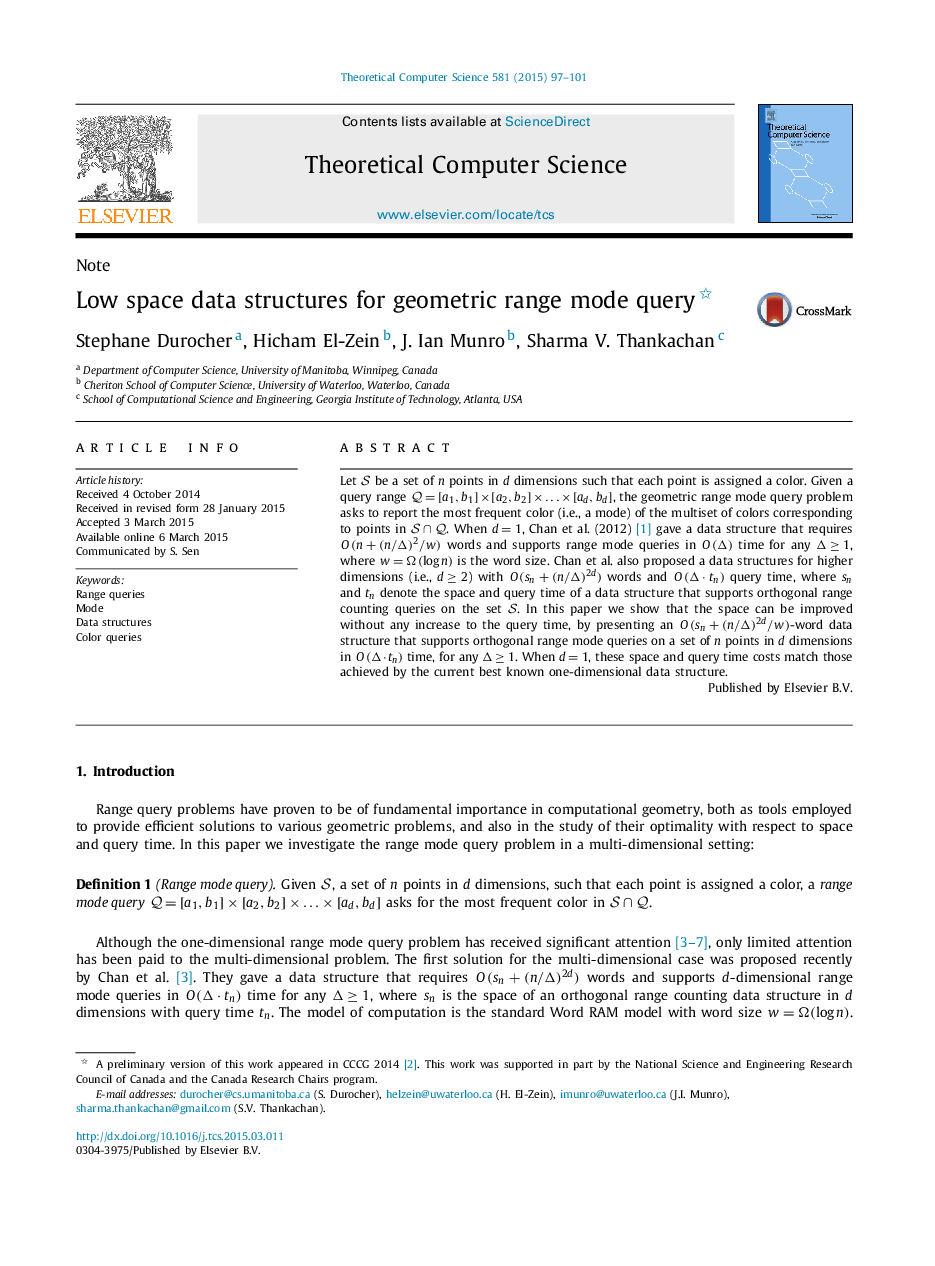| Article ID | Journal | Published Year | Pages | File Type |
|---|---|---|---|---|
| 433914 | Theoretical Computer Science | 2015 | 5 Pages |
Let SS be a set of n points in d dimensions such that each point is assigned a color. Given a query range Q=[a1,b1]×[a2,b2]×…×[ad,bd]Q=[a1,b1]×[a2,b2]×…×[ad,bd], the geometric range mode query problem asks to report the most frequent color (i.e., a mode) of the multiset of colors corresponding to points in S∩QS∩Q. When d=1d=1, Chan et al. (2012) [1] gave a data structure that requires O(n+(n/Δ)2/w)O(n+(n/Δ)2/w) words and supports range mode queries in O(Δ)O(Δ) time for any Δ≥1Δ≥1, where w=Ω(logn)w=Ω(logn) is the word size. Chan et al. also proposed a data structures for higher dimensions (i.e., d≥2d≥2) with O(sn+(n/Δ)2d)O(sn+(n/Δ)2d) words and O(Δ⋅tn)O(Δ⋅tn) query time, where snsn and tntn denote the space and query time of a data structure that supports orthogonal range counting queries on the set SS. In this paper we show that the space can be improved without any increase to the query time, by presenting an O(sn+(n/Δ)2d/w)O(sn+(n/Δ)2d/w)-word data structure that supports orthogonal range mode queries on a set of n points in d dimensions in O(Δ⋅tn)O(Δ⋅tn) time, for any Δ≥1Δ≥1. When d=1d=1, these space and query time costs match those achieved by the current best known one-dimensional data structure.
